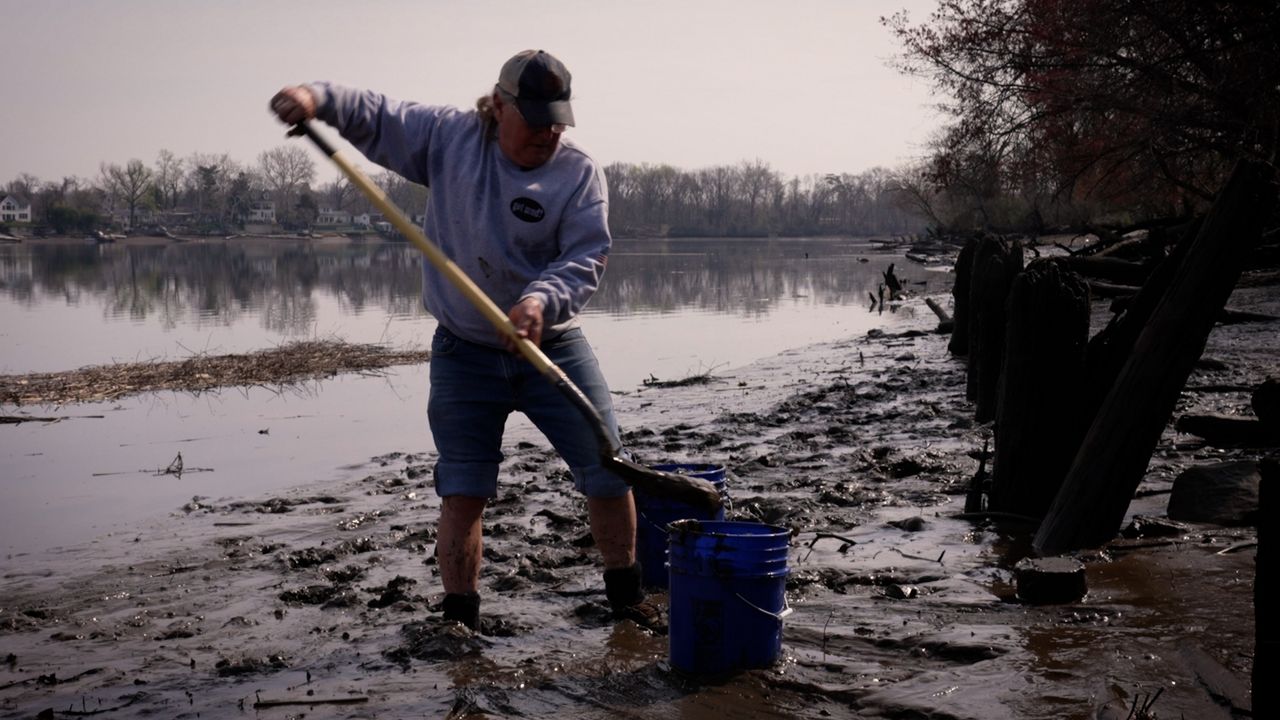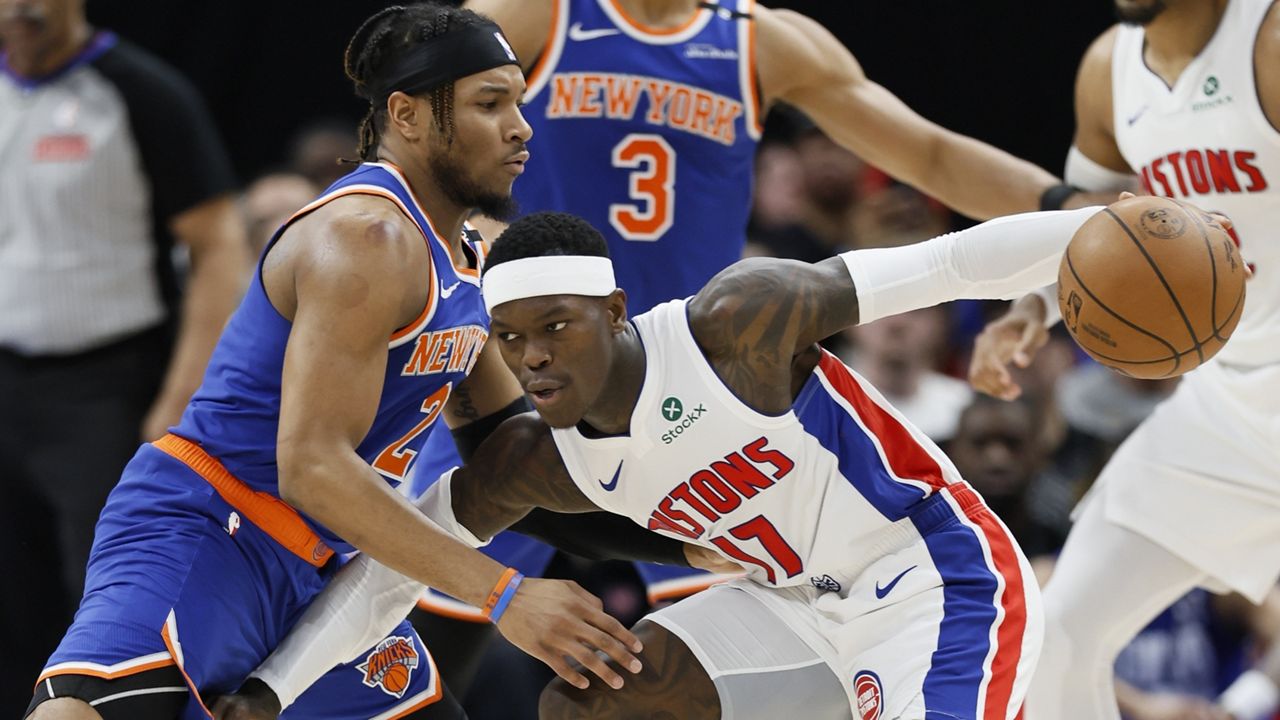New baseballs, fresh out of the box, are slippery in their white leather casing. So pitchers, at all levels of the game, rely on mud to help them get a better grip on the ball.
The source of that mud has been the subject of rumors in the baseball world for a century. Baseball’s "Mud Guy," Jim Bintliff, recently took NY1’s Stef Manisero to the "Secret Spot" where he collects the mud.
“This is where I used to spend my summers as a kid, out here,” Bintliff said. The "Secret Spot" is his spot.
What You Need To Know
- New baseballs, fresh out of the box, are slippery in their white leather casing. So pitchers, at all levels of the game, rely on mud to help them get a better grip on the ball
- The source of that mud has been the subject of rumors in the baseball world for a century
- Baseball’s "Mud Guy" took NY1’s Stef Manisero to the "Secret Spot" where he collects the mud
“I think it’s the New Jersey side of the Delaware River, if I’m not mistaken,” Brooklyn Cyclones pitcher Christian Scott said.
“It’s like some creek or some pond somewhere in the northeast, right?” Staten Island FerryHawks pitcher Vincenzo Aiello added.
Well... sort of. NY1 has been sworn to secrecy about the exact location — Bintliff makes some visitors wear a blindfold. What NY1 can say is that it’s a tributary of the Delaware River down the Jersey Shore, and from there, the mud winds up being rubbed onto baseballs thrown all around the globe.
First stop was Bintliff’s garage, where thousands of gallons of mud are processed, packed and shipped out each year. He calls it the "Mud Capital of the World.”
And while it’s tempting to call him the "Mud Man," he prefers it if you don’t.
"'Mud Guy' is what I go by,” Bintliff said. It’s no surprise the "Mud Guy" grew up a huge baseball fan.

“It’s like a game of chess, when you watch a baseball game,” Bintliff said. “And people don’t realize that.”
Something else many people may not realize is that a new baseball, in its white leather casing, is slippery.
“No pitchers really like 'a pearl' — that’s what we call a brand new baseball,” Brooklyn Cyclones pitcher Eli Ankeney said.
“It slips right out of your hands. It’s like a cue ball,” Aiello explained.
For most of its existence, Major League Baseball has struggled to find a balance between giving pitchers better control of the ball, without giving them an unfair advantage.
In 1920, after the "Dead Ball Era," the league started using new baseballs, and pitchers were having trouble getting a good grip on the ball. That same season, Ray Chapman, a shortstop for the Cleveland Indians, was killed by a wild pitch.
To this day, he is the only player to die directly from an injury in an MLB game.
“Hit him in the temple and he died,” Bintliff said. So the league started looking for solutions.
“They tried shoe polish, they tried tobacco juice, they tried dirt from the infield, but everything they tried damaged the coating of the baseball,” Bintliff said.
Then Lena Blackburne, a former player-turned-manager, had another idea.
He, too, grew up on this part of the Delaware, swimming and fishing in its water.
“He saw this mud and he thought, 'Well, I’ll try this,' and he took it in to the Philadelphia Athletics clubhouse and sat down with the umpires and worked with it and experimented with it, and they found, this is the stuff,” Bintliff said. “So 1938, it was being used by everybody in the American League.”
Blackburne’s best friend was Bintliff’s grandfather, who turned shoveling and shipping the mud into a side gig. Bintliff shared a picture with NY1 of him and his father on a shipping day circa 1981, when he says two five-gallon buckets would have been enough for the entire season.
Today, it’s become a muddy monopoly, used by all 30 teams in both the majors and minors, as well as hundreds of Little League, high school and college teams, too.
In the past few years, National Football League teams have been using his mud, too. Teams typically rub footballs in the grass on the field before a game for the same reason, so players can get a better grip on the ball.
But now, with more fields using turf instead of grass, they needed a substitute for the mud. The higher demand means Bintliff spends more days out on the river.
The harvest, he calls it. “It’s a labor of love,” Bintliff said.
So, what’s so special about the mud? Bintliff says on his small stretch of the river bank, the mineral content of the sediment is uniquely perfect for coating baseballs, and he can’t help but be proud.
“When I see a pitcher that's really sick, throwing the ball, making it do unimaginable things, I'm like, 'Yeah, that's our mud,’” Bintliff said.
He knows it, and the players do, too.
“Oh yeah, this is the primo stuff right there,” said Francis Delgado, the Staten Island FerryHawks' clubhouse manager.
Last year, MLB sent a notice to all 30 teams with specific guidelines for exactly how to prepare the baseballs before each game.
“They have to use a certain amount of mud. You have to rub them for so long, you have to rub them in this time period before the use,” Bintliff said.
It’s all part of the ongoing effort to make the sport more uniform. Bintliff wonders at what cost.
“I don’t know, I always thought that was part of the magic,” Bintliff said. “Historically, Nolan Ryan used to make the umpires rub them twice, because he liked the ball really dark — it gave him an advantage over the batters, he wouldn’t get that advantage at somebody else’s park. You know, home field advantage has its perks, that was one of them. But, you can’t do that anymore.”
On harvest days, his mind can’t help but drift back.
“I spend a lot of time thinking about my grandfather and Lena and the old days of baseball. The day he called me and said, ‘I want you to take it over completely,’ I was like, wow. That was surreal,” Bintliff said.
When the shoveling is done, he washes his muddy boots and he heads back home — the truck, 500 pounds heavier. But never a trip to the river, without a stop at the cemetery to visit the man who started it all.
“Just to remember him and to thank him and say hi," Bintliff said. “I would just tell him thanks, thanks for being my grandfather. Man, he would not believe what happened to this mud.”







_CG_PKG_Five_Boro_Bike_Tour_134126171_2279)

_DNT_SCHOLAR_Raya_Scheffler_CG_134101627_0)